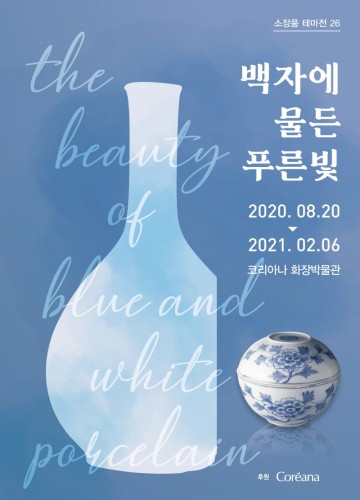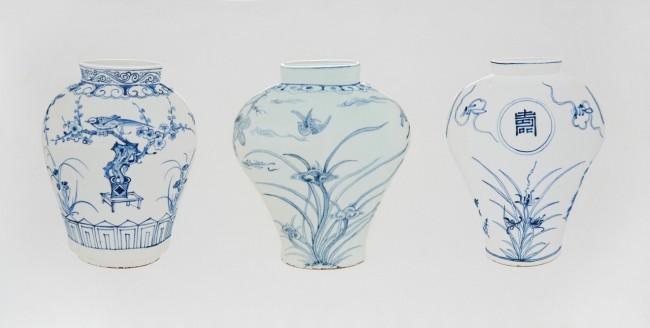Special Exhibitions
-
 The Beauty of Blue and White Porcelain2020. 8. 20 - 2021. 3. 4전시 장소 : Coreana Cosmetics Museum's 6F
The Beauty of Blue and White Porcelain2020. 8. 20 - 2021. 3. 4전시 장소 : Coreana Cosmetics Museum's 6FOur days are imbued in a wide variety of hues; colors accompany us on every corner of our lives.
From old, white has symbolized integrity and moderation while blue has signified hope, life, and growth. Etched into the very fabrics of our diet, accommodations, and attire, these two colors were widely used in Korean culture.
In the arena of traditional craft, the harmony of blue drawings on white porcelain – Baekja Cheongwha – is particularly striking. Relying on a uniquely Korean branch of Confucianism (Seongri-Hak) as the governing ideology during its early days, the Joseon Dynasty appreciated the aesthetics of austerity and modesty in white porcelains, which resulted in the sophistication of production techniques. The royalties and the ruling class were immediately captivated by China’s blue and white porcelain upon its introduction in the 14th century.
The manufacture and management of Baekja Cheongwha were overseen by institutions that worked exclusively for the royal family. The designs were drawn by painters who belonged to a specialized branch of the government, using an expensive cobalt blue imported from China. As the flagship line of white porcelain, Baekja Cheongwha became a blossoming culture amidst the royalty and nobility; the scope of its form and design diversified to reflect the socio-economic shifts in the later years of the Joseon Dynasty, such as the privatization of the porcelain manufacturing facilities and increase in supply demands.
This is the Coreana Cosmetics Museum’s 26th special exhibition, featuring over sixty pieces of traditional craftwork along with their contemporary interpretations across a wide range of applications including ancestral rituals and sundry items of daily use. We hope that the exhibition will serve as an opportunity for its visitors to appreciate Joseon’s unique aesthetics through Baekja Cheongwhas.
Supported by Coreana Cosmetics, Co., Ltd.

LEE SEUNG HEE _TAO17022801_57.4x113.2cm_ceramic_2017


